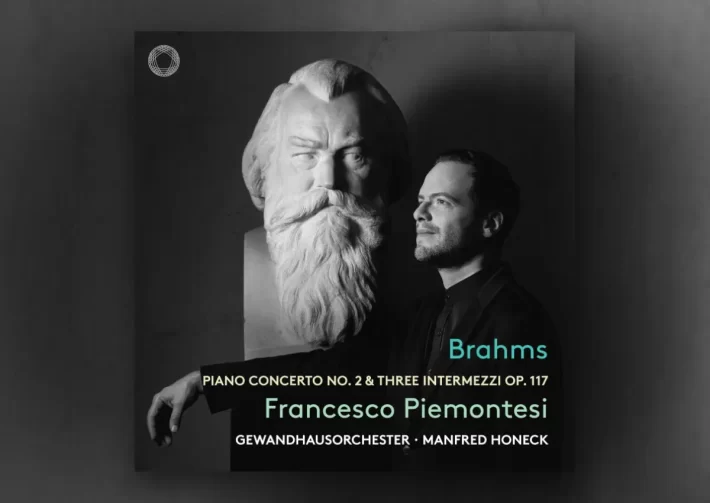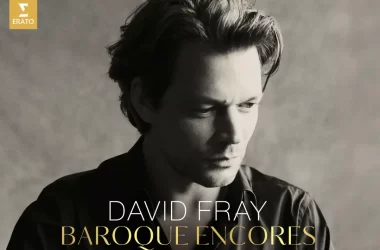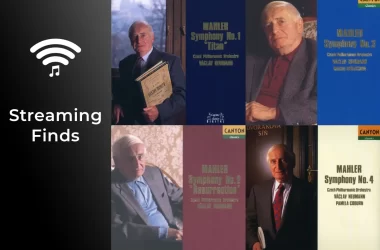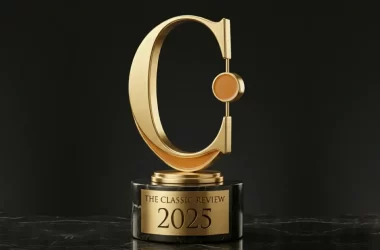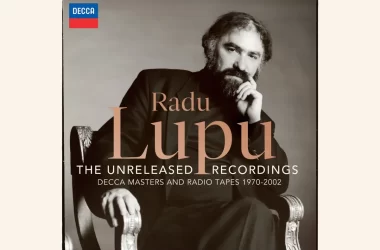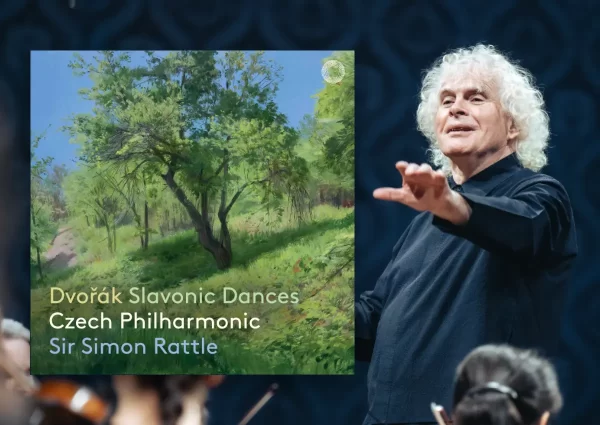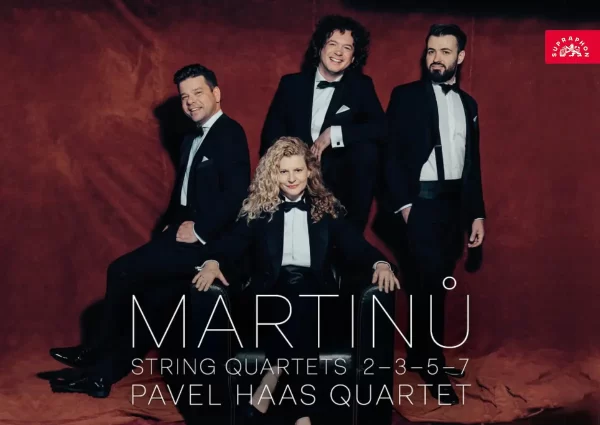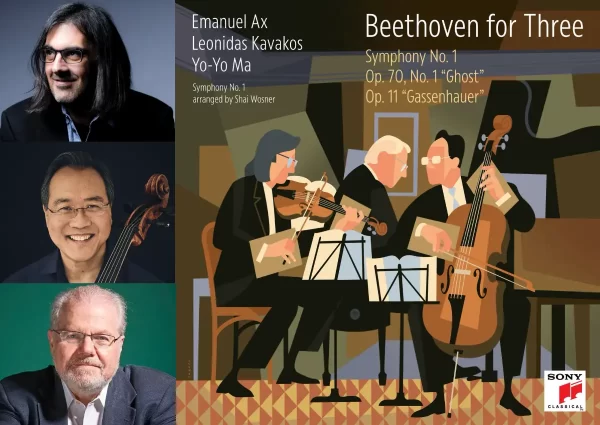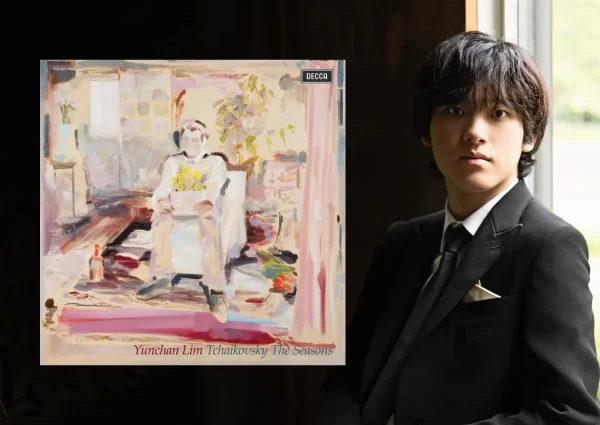Brahms completed his Second Piano Concerto in 1881. Jan Swafford, author of the liner notes, describes the work as a “joining of the grandly Olympian with the intimately songful,” and that aptly described performance offered here.
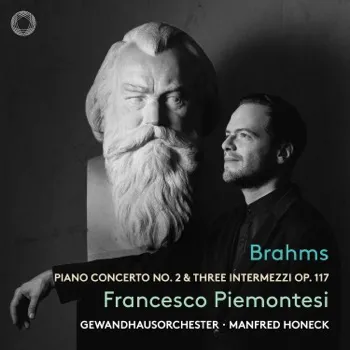
The sprawling opening movement needs a conductor who has the full measure of the music’s large-scale structure. Honeck, an excellent Brahms conductor, is in excellent form, revealing a wealth of detail as he guides us through each movement, clarifying the concerto’s symphonic construction. Tempos are ideal, and even in the Adagio, he generates forward momentum. Writing about his recent Pittsburgh recording of Mozart’s Requiem, I complained about his fussy micro-managing, but there is no sign of that here. He honors the score and summons playing of energy, finesse, and richness from the Gewandhaus orchestra.
The orchestra is already featured in one of the classic recordings of this work: the 2006 Decca set of both concertos, featuring pianist Nelson Freire and conducted by Riccardo Chailly. The orchestra is certainly impressive in that recording, but the marbled richness of its sound is better captured by Pentatone’s engineers. And their chamber music sense of listening to and interacting with both soloist and one another are marvelous. Solos by front desk players are stunning: just listen to the horn in the opening of the first movement, and the cello solo in the Adagio. Later in that same movement, sample the gentle dialogue between Piemontesi and the clarinet, as if we are allowed to listen in on an intimate conversation between two old friends. World class playing, through and through.
Piemontesi’s sensitive and flexible playing feels ideal in this work. His tone never hardens; even the strongest accents are dispatched with warm, rounded tone. If Freire’s more assertive reading highlights the concerto’s muscularity (Chailly’s more brass dominated orchestra also contributes to this), Piemontesi’s more introverted approach draws out every drop of lyricism. Yet the performance has consistent power and strength. Friere’s Allegro has a sharper drive, but Piemontesi finds a Mendelssohn-like playfulness that is just as engaging. In Friere’s performance one is drawn to his virtuosity, whereas Piemontesi’s always draws me into the brilliance and athleticism of the music itself – a subtle difference, but one I found more convincing.
The third movement is breathtaking, soloist, conductor and orchestra carefully listening and interacting with one another. I feared Piemontesi initial entrance would be overshadowed by the gorgeous cello playing, but his ascending arpeggio has such heart-rending tenderness. I admire how easily Piemontesi shares the limelight with the orchestral soloists, and the music making communicates a poignant sense of regret, as if Brahms is seeking to understand and accept his personal losses. Perhaps my description seems overly flowery, but the poetry of the playing kept taking me out of critical listening to a place emotion and contemplation, which is surely a sign of profound music making.
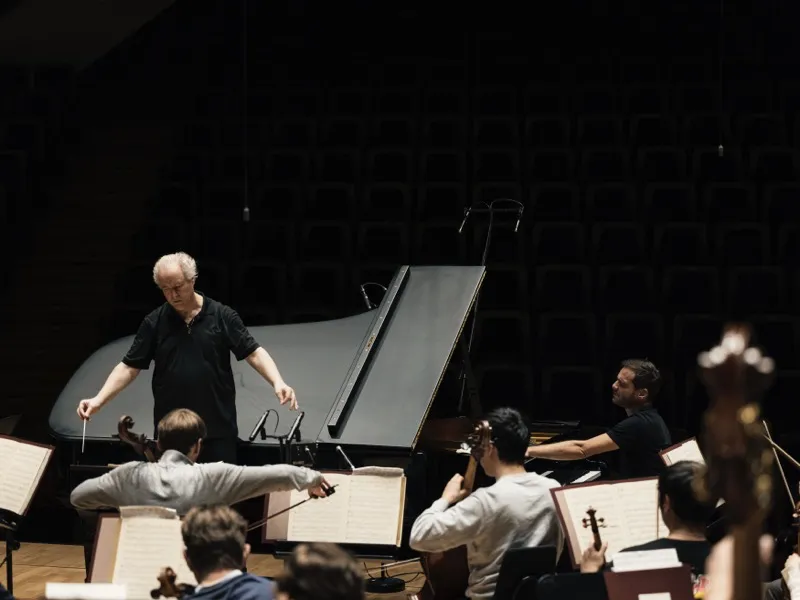
Francesco Piemontesi, Gewandhausorchester, Manfred Honeck (©️ Patrick Wack)
The emotional trajectory of the final movement is more playful than I expected. Its secondary theme tempts the orchestra to a darker, more ruminative mood, but Piemontesi’s agile, quicksilver articulation fends off that darkness. Again, the most difficult technical passages are brilliantly performed, but never in a way that draws attention to itself. Instead, the playing invites us to revel in the brilliance of the music itself.
The three Op. 117 Intermezzi are all I hoped they would be: poetic, sensitive to every change in mood, and beautifully played – a touching postlude to the concerto performance.
The booklet features introductory notes by both Piemontesi and Honeck, and Jan Swafford excellent notes (though his discussion of the concerto is a slightly edited text of the one found in his notes for Stephen Hough’s Hyperion set.) That is another impressive performance of this concerto, though the orchestra is outmatched by their Gewandhaus colleagues.
This new recording is warmly recommended, and I was pleased to read that Pentatone will release a recording of the first concerto by these same artists next year.
Recommended Comparisons

Album Details |
|
|---|---|
| Album name | Brahms – Piano Concerto No. 2, Intermezzi Op. 117 |
| Label | Pentatone |
| Catalogue No. | PTC5187461 |
| Artists | Francesco Piemontesi, Gewandhausorchester Leipzig, Manfred honeck |
Included with an Apple Music subscription:
Available on Presto Music
Latest Classical Music Posts

